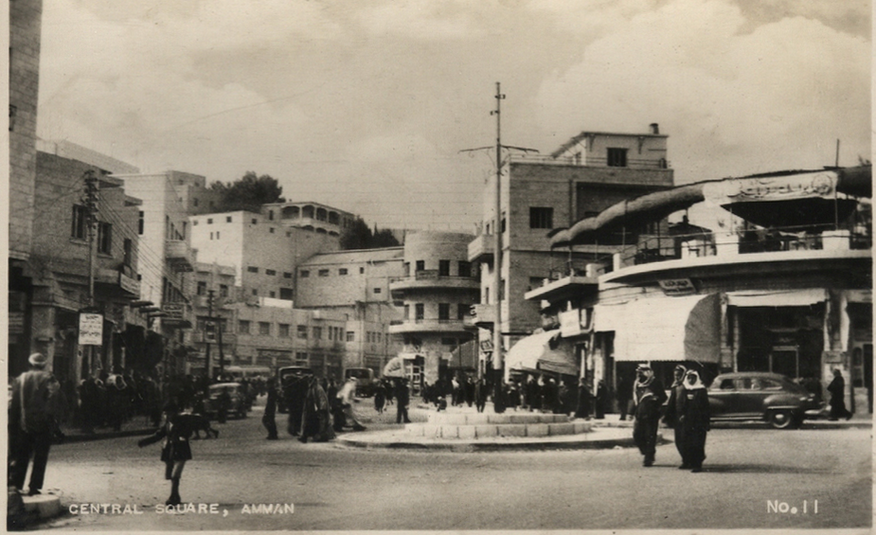Faisal Plaza Urban Regeneration Project
Client : Greater Amman Municipality (GAM)
Location : King Faisal Street, Downtown, Amman- Jordan
Year : 2007- 2009
Faisal Plaza: Beating Heart and City Memoir
Faisal Plaza represents geographically and spatially the heart of the city of Amman where many of its seven mountains converge. Sahet Faisal was the meeting point and the interface between the early Hashemite State on one hand and the diverse citizens of Amman and the nation on the other. Faisal was the place where the founding King (the late King Abdullah I) and later on the late King Hussein met with the people and delivered speeches either from specially designed podiums or from terraces of significant buildings (e.g., former Municipality Building). Military parades and victory arches were common events and scenes at Faisal at that time.
Faisal was the hearth of an active public sphere represented by the formation of several hotels, books and journal shops, and cafés such as The Arab League Café, Hamdan, Central, Balat al Rashid, and Shalati to mention a few. Politicians, poets, novelists, journalists and other significant figures formed the nucleus of an active Ammani public sphere. Faisal was also the administrative and economic center of the City. It housed the Post Office (al Bareed), the Ottoman Bank, the Ministry of Education, the Ministry of Justice (adilieh), and Amman Municipality (al naf’a). Faisal was also considered the main financial hub for Amman hosting institutions such as the Ottoman Bank (oldest bank in the City), the Agricultural Bank (Al Masraf al Zirah’e), and later on the Arab Bank. The strong sense of security at Faisal encouraged the merchants of the Gold’s market (Souq al Dahab) to locate it there adding another financial symbol to this beating heart of Amman.
Project Objectives and Design Idea
The design for the project started with conducting different types of surveys and analysis including building and spaces surveys, traffic analysis, ethnographic encounters and different urban analysis.
The Project design idea centered on incorporating different levels of interventions (Physical and non-
physical). Other design objectives include:
• Addressing economic degradation and incorporating a new workable urban public space pedestrian environment in an attempt to gradually win back public space that is more pedestrian friendly.
• Enhance the quality of urban space and complementing the existing urban morphology & experience (Corner buildings, Souq experience)
• Preserving both: memories of everyday life and formal narratives of space at Faisal through the continuity and preservation of physical traces of change and transformation to achieve temporal depth in order to qualify the city and respond critically to critics that accuse it of being a mere new city with no soul.

























